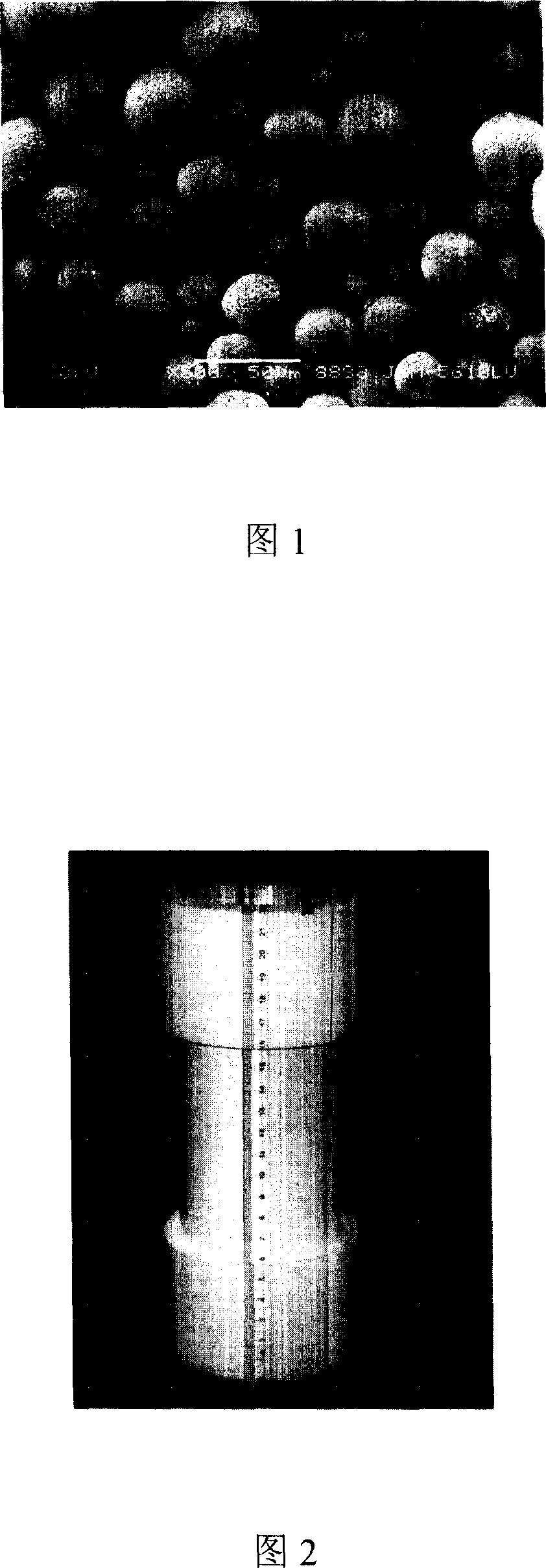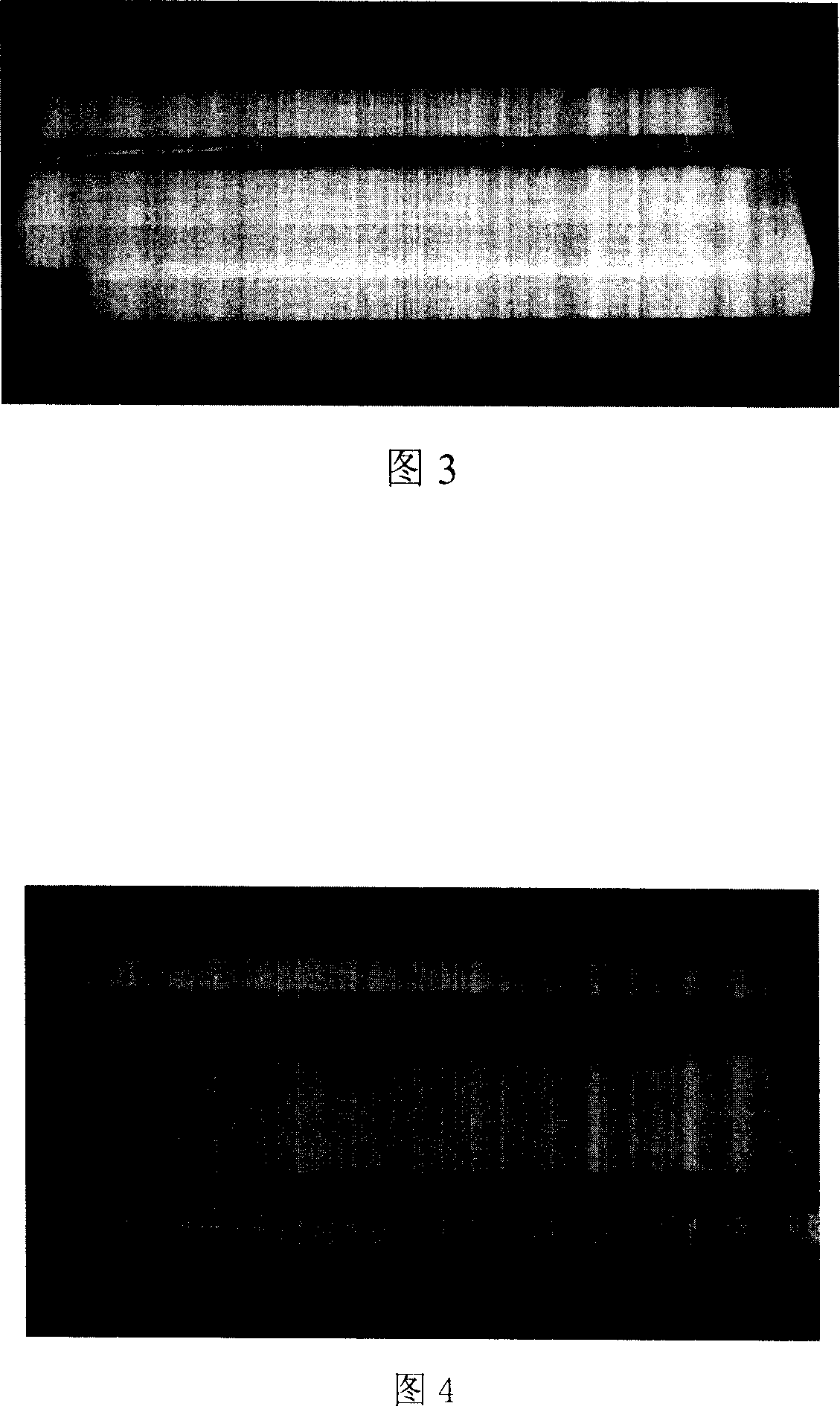Preparing process of great size energy-storing dielectric ceramic
A medium ceramic, large-scale technology, applied in the field of ceramic materials, can solve problems such as rarely seen reports, difficult preparation of functional ceramics, limited promotion of functional ceramics, etc., to achieve simple and reliable process, good market application prospects and commercial value, deformation small effect
- Summary
- Abstract
- Description
- Claims
- Application Information
AI Technical Summary
Problems solved by technology
Method used
Image
Examples
Embodiment 1
[0039] 18% Al 2 o 3 Add 30t%H 3 BO 3 Add 52% SiO 2 Stir and mix the powder, keep warm at 1500°C for 2 hours, ball mill after water quenching to obtain glass powder, and then use 99.5% TiO 2 Add the ratio of 0.5% borosilicate glass powder to prepare the solid material for the water-based slurry, the solid material and deionized water mass ratio is 1: 1, the triammonium citrate content is 1% of the solid material quality, polyvinyl alcohol ( The content of PVA) is 0.5% of solid material quality, n-butanol is about 0.5% of solid material quality, and the mass ratio of solid material and ball milling medium is 1: 2. Carry out wet ball milling for 4 hours according to the above ratio; perform centrifugal spray granulation on the water-based slurry prepared by ball milling, the inlet air temperature is 165±5°C, the outlet air temperature is 115±5°C, and the flow rate is 3 kg / hour; It is formed by cold isostatic pressing, the forming pressure is 150 MPa, and the pressure is main...
Embodiment 2
[0041] 25% Al 2 o 3 Add 30%H 3 BO 3 Add 45% SiO 2 The powder is stirred and mixed, and kept at 1500°C for 2 hours. After water quenching, ball milling is obtained to obtain borosilicate glass powder, and then according to 98% TiO 2 Add 2% borosilicate glass powder to prepare solid material for water-based slurry, the mass ratio of solid material and deionized water is 1:2, the content of triammonium citrate is about 0.5% of the mass of solid material, and the content of PVA 0.5% of the mass of the solid material, n-octanol is 0.5% of the mass of the solid material, and the mass ratio of the solid material to the ball milling medium is 1:4. Carry out wet ball milling for 4 hours according to the above ratio; perform centrifugal spray granulation on the water-based slurry prepared by ball milling, the inlet air temperature is 165±5°C, the outlet air temperature is 115±5°C, and the flow rate is 3 kg / hour; It is formed by cold isostatic pressing, the forming pressure is 150 M...
Embodiment 3
[0043] 15% CaO plus 20% H 3 BO 3 Add 45% SiO 2加 20% Bi 2 o 3 Stir and mix the powder, keep it warm at 1450°C for 2 hours, ball mill after water quenching to obtain borosilicate glass powder, and then follow the 8.2% SrZrO 3 Add 87.8% SrTiO 3 Add the ratio of 4% borosilicate glass powder to prepare the solid material for water-based slurry, the mass ratio of solid material and deionized water is 1:0.8, the content of triammonium citrate is 0.7% of the solid material quality, and the content of PVA 0.8% of the mass of the solid material, n-butanol is about 0.4% of the mass of the solid material, and the mass ratio of the solid material to the ball milling medium is 1:1. Carry out wet ball milling according to the above ratio for 6 hours; perform centrifugal spray granulation on the water-based slurry prepared by the ball mill, the inlet air temperature is 165±5°C, the outlet air temperature is 110±5°C, and the flow rate is 5 kg / hour. It is formed by cold isostatic pressing...
PUM
 Login to View More
Login to View More Abstract
Description
Claims
Application Information
 Login to View More
Login to View More - R&D
- Intellectual Property
- Life Sciences
- Materials
- Tech Scout
- Unparalleled Data Quality
- Higher Quality Content
- 60% Fewer Hallucinations
Browse by: Latest US Patents, China's latest patents, Technical Efficacy Thesaurus, Application Domain, Technology Topic, Popular Technical Reports.
© 2025 PatSnap. All rights reserved.Legal|Privacy policy|Modern Slavery Act Transparency Statement|Sitemap|About US| Contact US: help@patsnap.com


